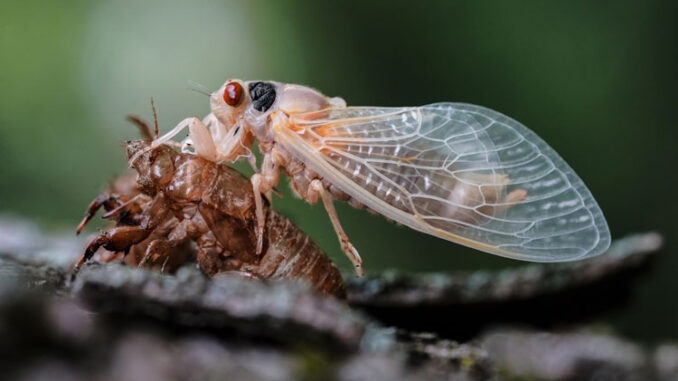
When cicadas emerge, they molt, or shed their nymph exoskeleton.
This spring and summer, some parts of the United States will be overwhelmed with cicadas as two different broods emerge at the same time. A brood is a group of cicadas. The last time these two broods emerged together was 1803! The result is expected to be noisy and a bit chaotic.
Cicadas are insects that go through incomplete metamorphosis. You might recall that this is a life cycle in which an animal goes through three stages: egg, nymph, and adult. Adults lay eggs on tree branches. The eggs hatch and nymphsfall to the ground. Then they burrow into the soil and spend their nymph stage underground. We usually see cicadas in their adult form, once they emerge to mate.
There are two types of cicadas. Annual cicadas spend two years in the nymph stage. These cicadas emerge every year. The cicadas that make the news every few years are periodical cicadas. These cicadas live underground in the nymph stage for either 13 or 17 years. When they emerge, it happens in massive numbers all at once.
Different broods of periodical cicadas emerge in different years and in different areas. This year, the 17-year cicada, Brood XIII, will emerge in part of the Midwest. The 13-year cicada, Brood XIX, will emerge in parts of the Midwest and Southeast. Parts of Illinois will experience the emergence of both broods.
If you live in an area where periodical cicadas are emerging, expect to start seeing and hearing them between late April and late June. When it happens, it will be loud. Males make a high-pitched buzz to attract mates. The sound can be as loud as a chain saw! But it won’t last long, so enjoy it while you can. Adult cicadas only live for a few weeks, and it might be several years before you see them again.
What Do You Think? Do you find the emergence of the cicadas fascinating or frightening?
Photo Credit: Michael J. Shirey



